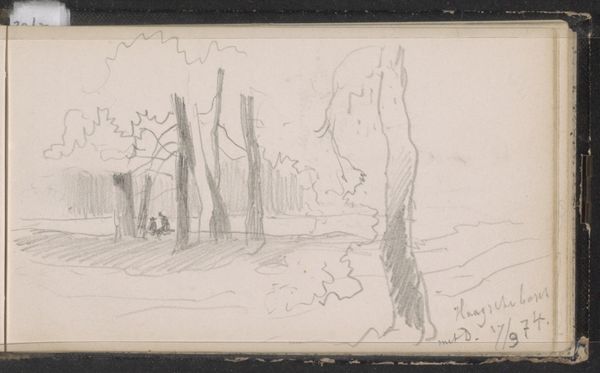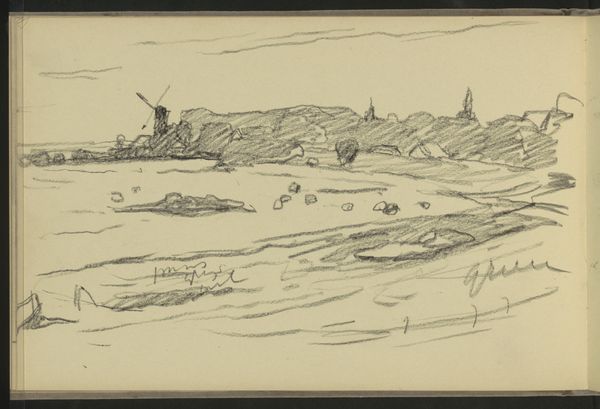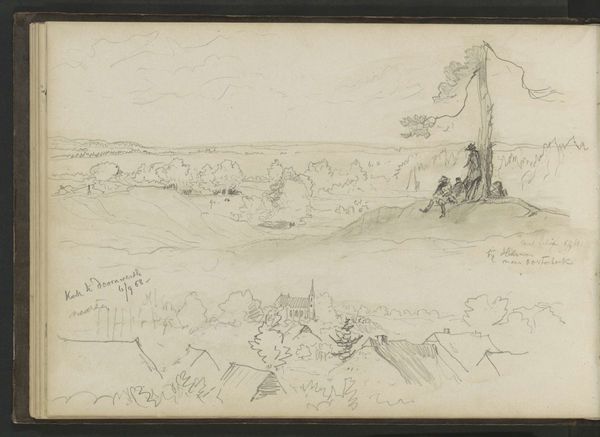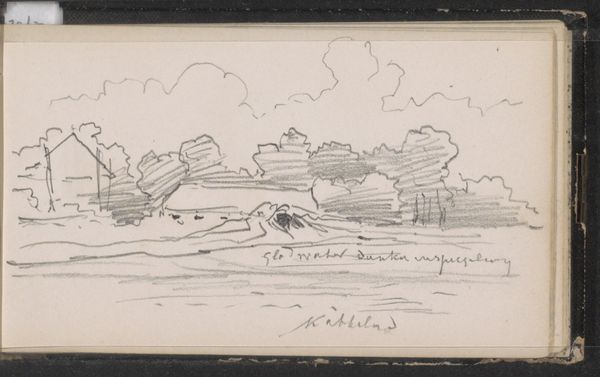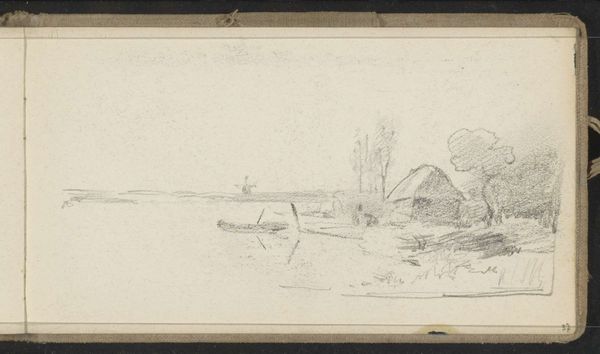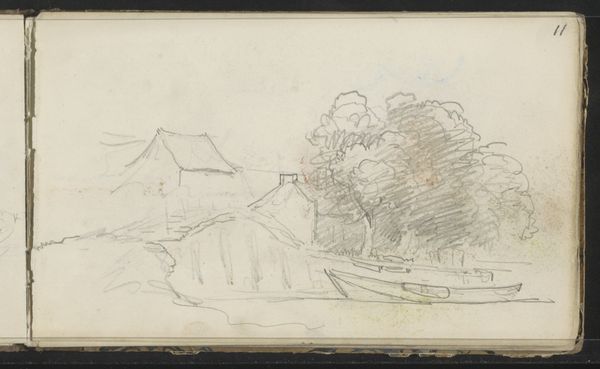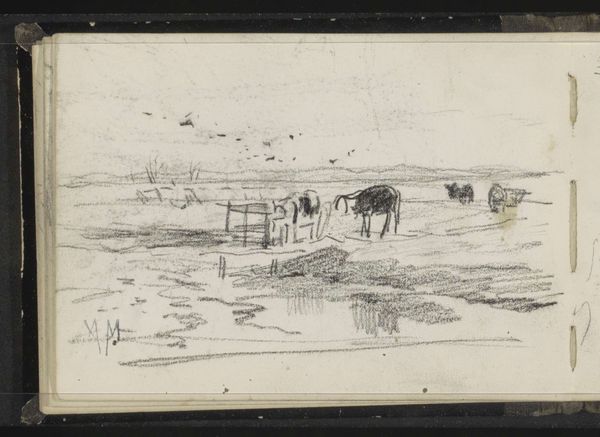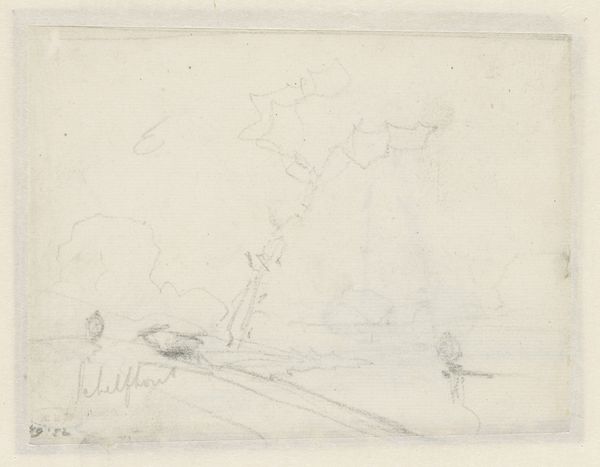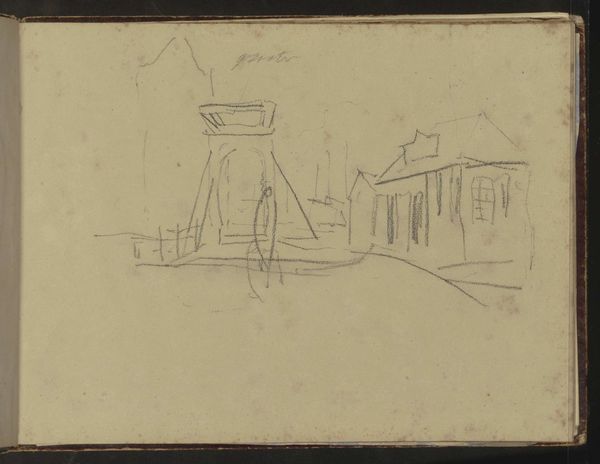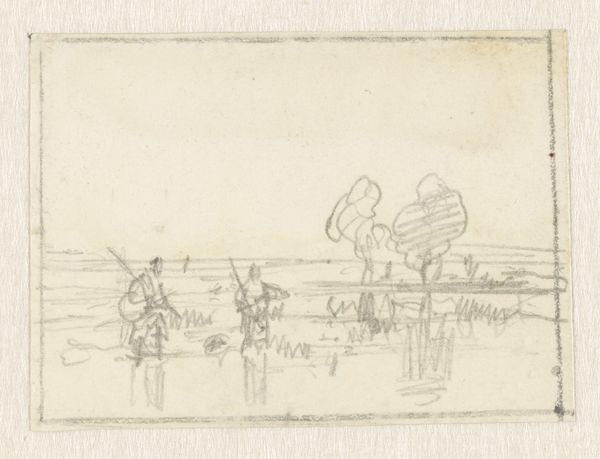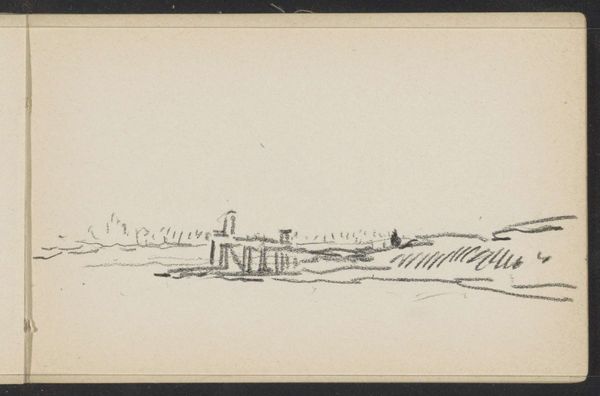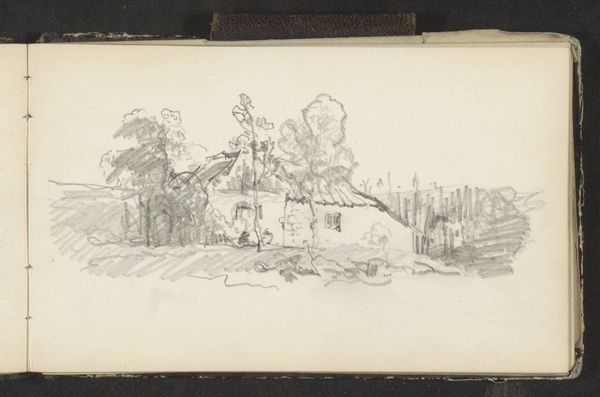
drawing, pencil
#
drawing
#
dutch-golden-age
#
landscape
#
pencil
#
realism
Copyright: Rijks Museum: Open Domain
Curator: What strikes me first about this pencil drawing, "Landscape with a Mill Between Overschie and Delft," by Johannes Tavenraat is its apparent stillness. Editor: Yes, it feels like a captured moment. Almost dreamlike, with that soft, muted pencil work suggesting transience. The windmill looms like a silent observer. Curator: Indeed. Created between 1874 and 1879, this work speaks to a pivotal time in Dutch history, witnessing both industrial advancement and a deep connection to agrarian life. Mills like these weren't merely functional; they were vital to the Dutch landscape, identity, and economy. Editor: So the windmill here, while appearing solitary, would have been quite central. It is a prominent visual symbol here, which might speak to themes of industry, hard labor, and perhaps the psychological weight of constant change within Dutch culture. Windmills traditionally carry connotations of self-sufficiency but there might be a collective aspect to the culture of labor depicted here. Curator: Precisely. These landscapes played an important socio-political role in how Dutch identity was constructed and marketed across Europe in the late 19th century. Picturesque windmills like this became deeply intertwined with national pride. Editor: I see how this almost understated depiction contrasts with that larger narrative. The technique, simple as it seems, carries the cultural memory of a Netherlands striving to define itself. And look at the placement; not idyllic or bombastic. Quietly functional within the landscape, even if romanticized by the artistic eye. Curator: Agreed. Tavenraat captures the duality; a peaceful scene with complex undertones. He evokes nostalgia, while subtly commenting on the changing social and industrial landscape. Editor: It's like looking at a visual poem, isn't it? Full of deceptively simple strokes with vast meaning lying just beneath the surface. Curator: Yes, absolutely, and as we stand here viewing this landscape today at the Rijksmuseum, it serves as a gentle reminder of how landscapes carry histories, how identities are constructed and maintained. Editor: Beautifully said. Now I am taking away something richer—it is more than simply a pencil drawing of a windmill.
Comments
No comments
Be the first to comment and join the conversation on the ultimate creative platform.
